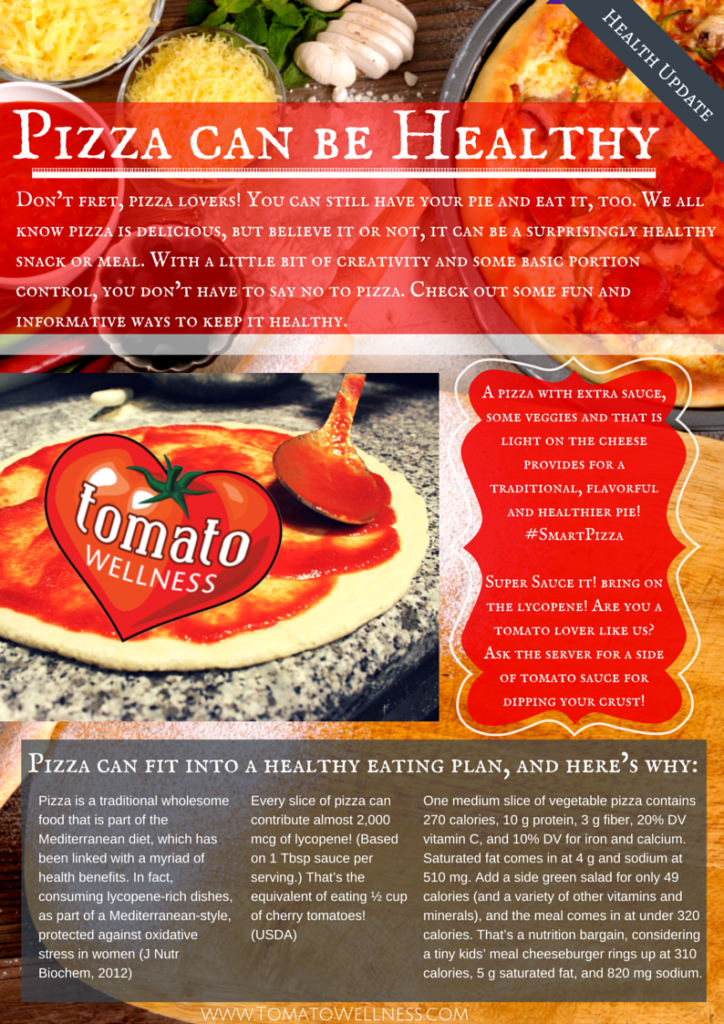Can pizza be a health food? You may be surprised by what Chelsey Amer, RD has to say about that! Read on to learn more about how pizza can be a nutritionally balanced meal.
When you think of American food, you may think of a burger and fries, but statistics show we’re crowding in on the Italians’ favorite: pizza!
Every second of the day, 350 slices of pizza are consumed. That means 1 in 8 Americans chow down on a slice of ‘za every day, regardless of race and gender.
As a registered dietitian nutritionist, you may be surprised to learn that I most definitely contribute to these statistics too. In fact, I recently made the mornings of many college students when I told The Daily Meal that in my professional opinion, a slice of pizza can be a better breakfast option than a bowl of sugary flakes.
Coming from a nutritionist, this may shock you, but pizza doesn’t deserve to be demonized as junk food, the way it’s often portrayed. Sure, a greasy slice with extra pepperoni or a deep-dish meat lovers pie may not be your best bets, but pizza can actually be a nutritionally-balanced meal.
Pizza, the way it was originally designed, is pretty straightforward. It should have a simple crust, plenty of tomato sauce, and a sprinkle of cheese. As explained, pizza contains a balance of the same 3 major nutrients we need to build a well-balanced and satisfying meal: carbohydrates, protein, and fat. The crust is your carbohydrate, cheese contains protein and fat.
Then, don’t forget about the tomato sauce on top! Lycopene, potent in cooked tomatoes, like pizza sauce, gives each slice a boost of antioxidants. Antioxidants are small compounds that help negate oxidative stress, a common cause of inflammation in the body. Diets rich in lycopene have been linked to reduced risk of infertility and chronic diseases, like heart disease, stroke, and diabetes, plus a lower incidence of prostate cancer.
One tablespoon of pizza sauce, the approximate amount in one average slice, contains almost 2,000 mcg of lycopene. According to the USDA, that’s the equivalent of eating one-half cup cherry tomatoes!
Of course, some versions of pizza can be more nutritious than others, so here are 5 steps to build a healthier pizza pie:
- Choose a Whole Wheat Thin Crust, If You Can
Whole grains contain more fiber than refined white flour, which is better for your health. Choosing a thin crust also helps manage your portion size.
- Lather on Tomato Sauce
Skip the white pie, and opt for extra tomato sauce. This will help keep your overall calories in check, but as previously mentioned, this antioxidant boost will promote good health too.
- Ask For “Light” Cheese
Do as the Italians do, and go light on the cheese. Cheese is a good source of protein, which promotes satiety and fullness, but does contain a decent amount of saturated fat, which is not as beneficial for your heart health.
- Add Extra Veggies for Good Measure
Skip the meat toppings and load up your pie with veggies instead. Vegetables will add even more flavor, vitamins and minerals, and fiber to keep you full for a longer period of time.
- Enjoy Every Bite!
Eliminate distractions while eating and savor every bite of your slice for an overall healthier dining experience.

Chelsey Amer, MS, RDN, CDN is a New York City-based registered dietitian nutritionist specializing in mindful weight management and disease prevention, helping individuals break up with dieting and find their food freedom. When Chelsey is not helping clients, she is developing deliciously nutritious, food-allergy friendly recipes, and photographing every bite for her healthy food blog, CitNutritionally.com!


Recent Comments